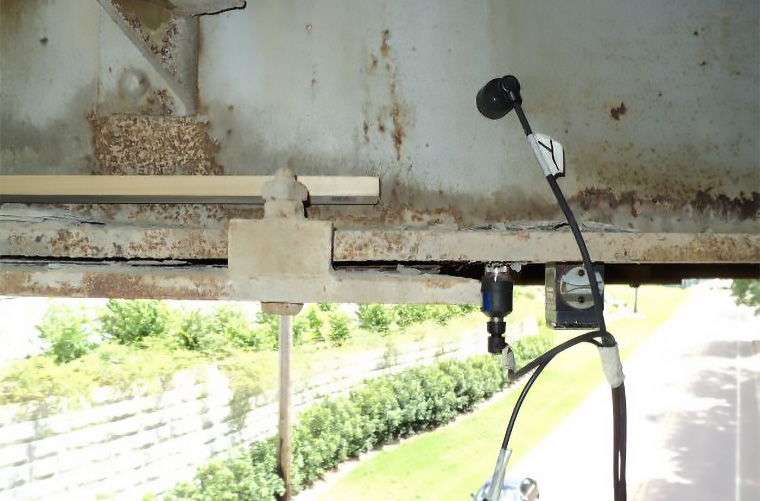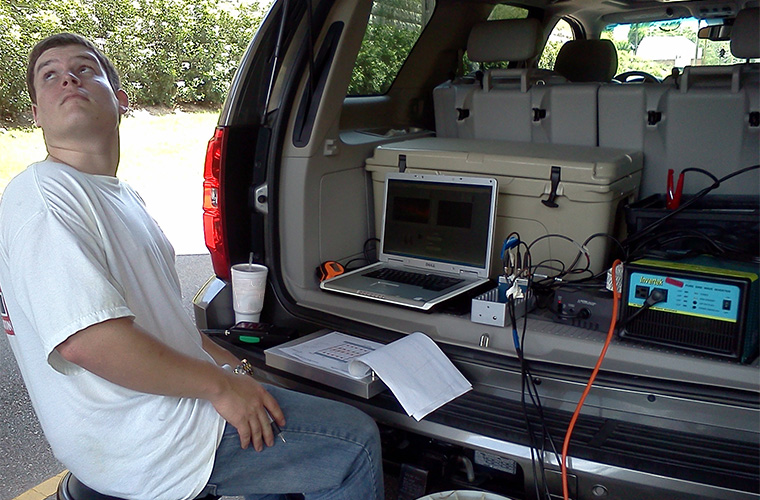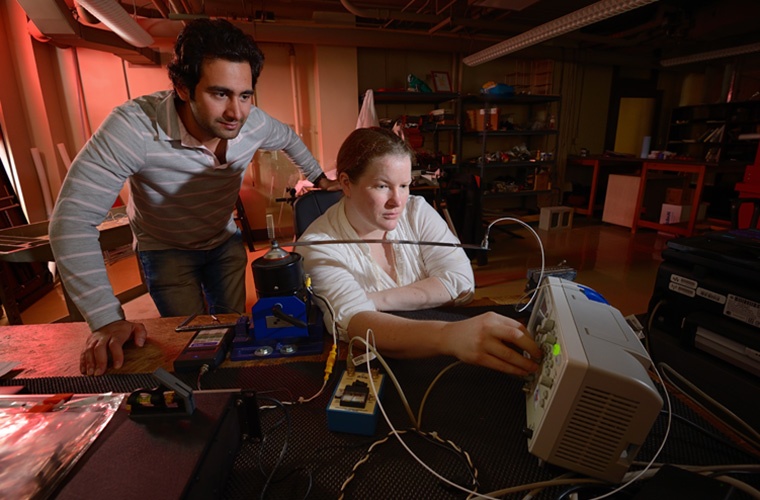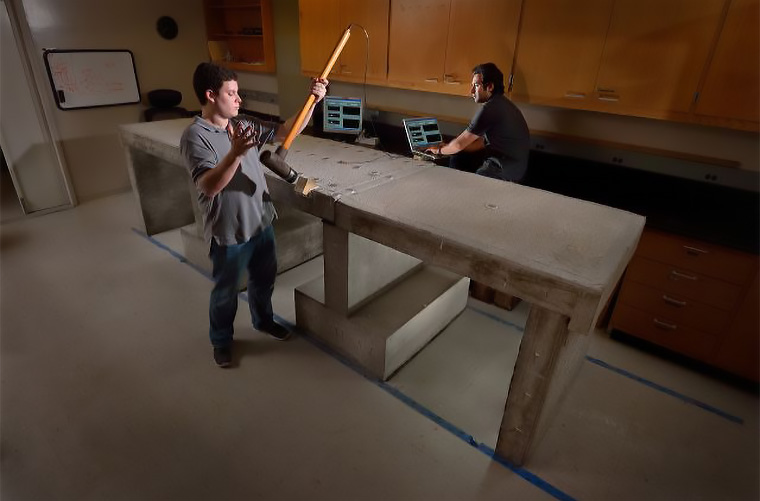Main Menu
- Home
- Product Finder
- Calibration Systems
- Calibration Services
- Digital Sensing
- Industrial Vibration Calibration
- Modal and Vibration Testing
- Non-Destructive Testing
- Sound & Vibration Rental Program
- Learn
- About Us
- Contact Us
 Dr. Elizabeth Ervin, Associate Professor in the Civil Engineering Department at the University of Mississippi, recently shared details of how she and her students used test and measurement equipment to structurally test both a student-built reinforced concrete bridge in a laboratory, as well as an actual, 32-ft tall bridge near campus.
Dr. Elizabeth Ervin, Associate Professor in the Civil Engineering Department at the University of Mississippi, recently shared details of how she and her students used test and measurement equipment to structurally test both a student-built reinforced concrete bridge in a laboratory, as well as an actual, 32-ft tall bridge near campus.
In order to generate an inspection tool that visually reveals both damage severity and location, the Structural Health Evaluation™ (SHE™) program has been developed at the University of Mississippi. The SHE™ program contains custom code for signal processing, modal decomposition, and health indication. For any structure, this program can use time history data from any sensor with any excitation to produce damage plots. Operational deflected shapes are produced for two cases, an as-built baseline and a damaged state; comparing modes reveals possible damage locations as well as damage severity, and damage output plots are then compared via eleven damage indices derived from six published indicators.
 During a small, 2-week intersession class, Dr. Ervin and her research group closed down one lane of a heavily used bridge near campus to test its structural integrity. (The bridge was built in 1940.)
During a small, 2-week intersession class, Dr. Ervin and her research group closed down one lane of a heavily used bridge near campus to test its structural integrity. (The bridge was built in 1940.)
To begin, the group configured a mobile test station consisting of a laptop running data acquisition software, a four-channel data acquisition module, and a pure sine inverter powered by car batteries.
They then took three single axis accelerometers that had been calibrated using a 13-lb modal shaker and a recently calibrated sensor, and mounted them to a homemade mounting block on the surface of the bridge. Next, the group mounted two single-axis accelerometers underneath the bridge. Excitation for this modal analysis was provided by bridge traffic.
What did the data for this experiment show? "It was NOT good," says Dr. Ervin. "We reported our results and found out it wasn't even on any maintenance program." Modal analysis is now in progress, and indices will be calculated to show level and location of damage.
 She continues, "My grad students are doing research on the 'four R's'...should we rehabilitate, repair, retrofit or raze a certain bridge? What the government does now is they have a guy go out and look at it. Bridges are complex, so how does he know if it'll collapse?"
She continues, "My grad students are doing research on the 'four R's'...should we rehabilitate, repair, retrofit or raze a certain bridge? What the government does now is they have a guy go out and look at it. Bridges are complex, so how does he know if it'll collapse?"
"The United States is extending the life of its structures past how long they are supposed to last. The government requires inspection every six months to two years for every major bridge, but it depends on the structure, who built it and who is responsible for it. They forecast in the future when a bridge is built, how many cars will pass over it, how big the city will be. You can't really predict that. They are guessing and hoping, and that's not good enough."
 The group conducted further structural research by building a 13-ft, 4600-lb reinforced concrete bridge in a National Center for Physical Acoustics laboratory to test as a comparison. Here, graduate student Steven Worley performed a modal "tap" test on the scale model using a 12-lb Modal Hammer Sledge with a hunk of wood providing 3D excitation. Using a triaxial accelerometer placed on top of the bridge model, graduate student Farhad Sedaghati observed the data on a laptop running data acquisition software.
The group conducted further structural research by building a 13-ft, 4600-lb reinforced concrete bridge in a National Center for Physical Acoustics laboratory to test as a comparison. Here, graduate student Steven Worley performed a modal "tap" test on the scale model using a 12-lb Modal Hammer Sledge with a hunk of wood providing 3D excitation. Using a triaxial accelerometer placed on top of the bridge model, graduate student Farhad Sedaghati observed the data on a laptop running data acquisition software.
"One thing about structural health monitoring is that people take daily structural data, but I am turning it into results," says Dr. Ervin. "That's what's missing in the world right now."